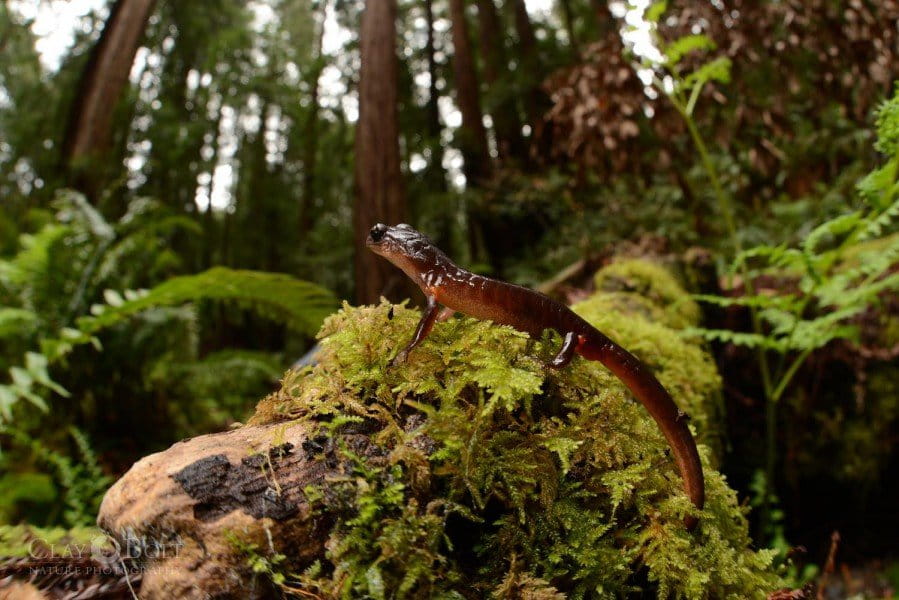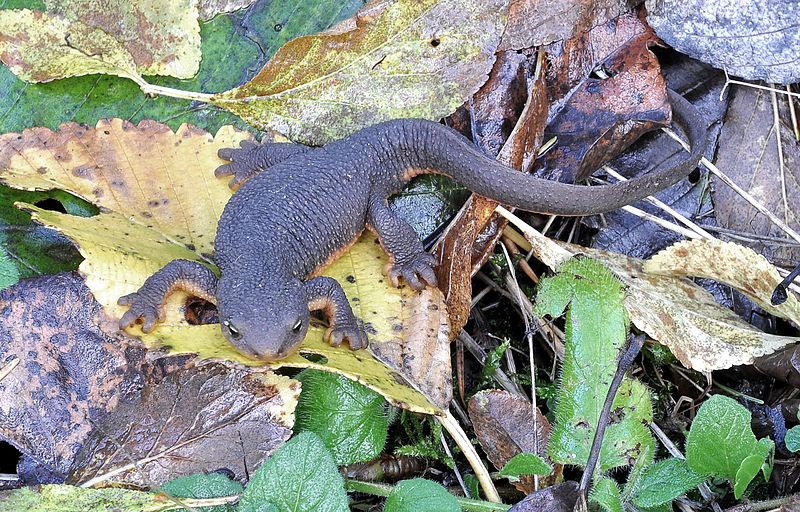- Experts have formed a National Disease Task Team to help develop a strategic plan for salamander-killing fungus or Bsal, according to study.
- A Bsal National Task Force for the U.S., composed of a Technical Advisory Committee and seven working groups, has also been created.
- Conservation groups are also rapidly disseminating information to the general public.
In 2013, European scientists discovered that a deadly chytrid fungus, Batrachochytrium salamandrivorans (or Bsal) was causing mass die-offs in salamander populations across northern Europe. Experts believe that Bsal originated in Asia, and spread to Europe via the international pet trade. Predictably, researchers are worried about Bsal spreading to North America, home to nearly 50 percent of the world’s salamander species.
So within a year of the pathogen’s discovery in Europe, conservation groups and researchers in the U.S., Canada, and Mexico initiated major response strategies to combat entry and spread of the fungal pathogen in North America and called for swift policy actions, according to a new study published today in PLoS Pathogens.
“It is important to remember that Bsal still hasn’t been detected in North America, so we have time and are currently ahead of the curve,” co-author James P. Lewis of the Amphibian Survival Alliance in Texas, U.S., told Mongabay. “But we need these policy measures in place now.”
While policies directed towards controlling diseases in humans and livestock are aplenty, those targeting pathogens in wildlife are rare, Lewis said.
In Europe for instance, where Bsal has already annihilated various salamander populations, only Switzerland is known to have restricted the import of salamanders, experts say. The Standing Committee to the Bern Convention in Europe also made a number of recommendations to countries in the European Union on December 4, but “these are far from solid policy action taking place,” Lewis said.

Countering the spread of Bsal to North America
As in Europe, international trade of amphibians could bring Bsal to North America unless urgent actions are taken, experts say.
The total annual value of the salamander trade is estimated to be close to $1 million in the U.S., according to the study. And the cost for eradication or control of Bsal once it enters the country will likely be in the tens of millions of dollars, lead author Matthew J. Gray of the University of Tennessee in Knoxville, U.S., told Mongabay.
So to prevent and reduce the entry and spread of this fungal pathogen in North America, partners in Amphibian and Reptile Conservation (PARC) formed a National Disease Task Team in January 2015. The purpose of the National Disease Task Team is to help develop a strategic plan for Bsal, according to the study. Among other tasks, the PARC National Disease Task Team is compiling a regional list of professionals in the U.S. to contact if people encounter an amphibian mass mortality event or suspect disease in amphibians.
Moreover, the U.S. Geological Survey and PARC have held workshops on Bsal, and facilitated the formation of a Bsal National Task Force for the U.S., composed of a Technical Advisory Committee and seven working groups. These working groups have experts focusing on priority topics such as response, surveillance and monitoring, research, diagnostics, and communication and outreach, the authors write.
“The working groups are developing products that are intended to become part of a larger Bsal strategic plan,” they add. The diagnostics working group, for instance, has created a list of laboratories that are capable of testing for Bsal.

Conservation groups such as the Amphibian Survival Alliance (ASA) and other organizations — including members of the pet industry — are disseminating information to the general public. The United States Association of Reptile Keepers (USARK) and the Pet Industry Joint Advisory Council (PIJAC), for example, have been sending out e-mails to their members to inform them of the threat and providing the latest scientific information, Lewis said.
“PIJAC recently produced a press release asking all their members to place a voluntary moratorium on the import of Cynops orientalis and Pachytriton labiatus salamanders,” Lewis added. “A very positive move from the industry.”
Additionally, to keep various stakeholders informed about Bsal, ASA has launched a website called salamanderFungus.org, and UC Berkeley in California has created a public LISTSERV on Bsal.
The Association of Fish and Wildlife Agencies (AFWA) — representing fish and wildlife agencies in North America — is also working with the Bsal Technical Advisory Committee to develop a “Bsal rapid response plan” template that can be customized by local, state or federal management entities, the authors write.
AFWA and ASA are working together to draft improved policies for wildlife disease management, using Bsal as an example, they add.
Conservation groups have also called for the creation of a North American Strategic Plan for Bsal, which should include components like identification of possible routes of Bsal entry, and strategies to prevent or reduce the risk of Bsal entry into U.S., Canada and Mexico, the authors write.
The latter can be achieved via two policy approaches, Gray said. “First is a trade moratorium on species that can be infected with Bsal through use of the U.S. Lacey Act, and second is a new legislation that requires animal health certificates accompany imported salamanders verifying shipments are Bsal free.”
The U.S. Fish and Wildlife Service (USFWS) is working on efforts for the first policy approach, Gray added, but the second approach would be a more long-term solution.

Challenges ahead
Despite the urgency of the problem, a number of challenges remain.
One challenge is getting the science right, Lewis said. “We need to get a better understanding of this pathogen and the species it is likely to impact… Because we still don’t fully understand what the host range of Bsal is, creating a trade ban on certain species may still leave the door open for Bsal to enter via trade.”
Another challenge is the lack of funding for research and surveillance, co-author Deanna H. Olson of the Pacific Northwest Research Station in Oregon, U.S., told Mongabay.
“On the plus side, however, scientists, managers, and policy makers are communicating and collaborating like never before, so there is an efficiency to Bsal strategic actions, including research and surveillance, that has never been realized in the past,” she added.
The biggest challenge, according to the experts, is implementing appropriate and adequate legislation to keep Bsal out of North America and prevent its spread within the countries.
Researchers are, however, hopeful that concrete policy actions will be taken soon.
“USFWS has been working hard on this issue over the last year and it seems that action is likely very soon,” Lewis said. “We hope that the action taken will be broad enough to address the overall threat and implemented immediately.”
Conservation groups are also hopeful that USFWS’s strategies could provide a framework for the Canadian and Mexican governments to follow.
“Forestalling a potential threat is always most effective before it arrives or at the early stages of its occurrence, as has been long recognized for invasive species programs,” Olson said. “So, even if a Bsal-related die off were to be detected in North America, it’s not too late. Time is on our side right now.”
Citation:
- Gray MJ, Lewis JP, Nanjappa P, Klocke B, Pasmans F, Martel A, et al. (2015) Batrachochytrium salamandrivorans: The North American Response and a Call for Action. PLoS Pathog 11(12): e1005251. doi:10.1371/journal.ppat.1005251